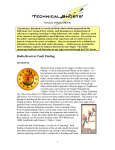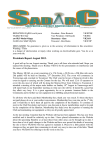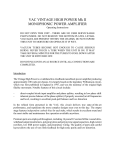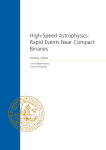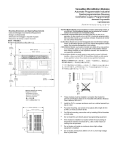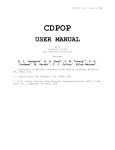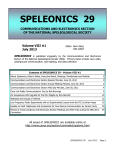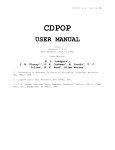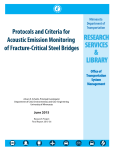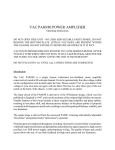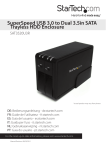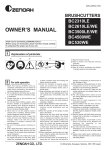Download 1993-06: IF amplifiers and their transformers
Transcript
IF amplifiers and their transformers Superheterodynes have such important advantages over simpler types of receiver that for the past half century, their use has been practically universal. This month we look at intermediate frequency or 'IF' amplifiers, the key to the successful performance of any superhet. The `supersonic heterodyne' receiver, to give it its full name, had its origins in World War 1. There is evidence to show that the French pioneered the superheterodyne concept, but Major Edwin Armstrong of the American Army Signal Corps is generally credited with creating the first working examples, and his work for General Electric enabled RCA to market the first domestic models. Initially, the problem that led to the invention of the superhet was that of obtaining any useful amplification at frequencies around 1MHz and higher with the triode valves that were then available. The solution embodied in the superhet was to use the principle of `beating', whereby the received signal was combined with a continuous locallygenerated signal, to create a third lower frequency beat or heterodyne. (Musicians have, of course, for centuries known about the production of a third note from two others by aural beating.) This new signal of much lower frequency (although still above the audio range i.e., supersonic) could then be amplified and detected by conventional methods, and Armstrong originally used a resistance-coupled amplifier. Known as the intermediate frequency amplifier, and soon shortened to 'the IF', this section of a receiver has a major influence on receiver performance. Initially, the purpose of the IF amplifier was simply to provide gain, and resistance-capacity or untuned transformer coupling was adequate. But by the late 1920's it was realised that tuned circuits would confer considerable advantages in terms of higher gain and controlled selectivity. Depending on their size and complexity, domestic valve receivers had one and sometimes two stages of IF amplification, coupled by coupled tuned circuits known universally as 'IF transformers'. With rare exceptions, these were contained in individual shield cans, with a remarkable range of styles, shapes and sizes round, square and rectangular, with the older types usually having the largest cans (Fig.1). A major advance in size reduction and efficiency was made in the late 1930's, with the introduction of powdered iron cores for the windings. More recently, ferrite cores have become universal. Bandpass tuning Although variations will be found, general practice was to use two tuned circuits for each transformer. A pair of tuned circuits in close proximity and resonant at the same frequency display some very special characteristics. With the windings well spaced, only signals in a narrow range of frequencies will be passed between windings and severe sideband reduction occurs, limiting audio bandwidth in receivers using normal intermediate frequencies. The bandwidth and signal transfer increases as the windings are brought closer together, until at the spacing called the `critical coupling' point, the response curve is more broadly peaked, and energy transfer is at a maximum. Critical coupling is frequently used in IF transformers, as it gives a good compromise between selectivity and reason- Fig. 1: Valve IF transformers came in many shapes and sizes, and many manufacturers had their own distinctive patterns. In this group from the author's junk box, there are cans made from aluminium, copper and zinc. 92 ELECTRONICS Australia, June 1993 Fig.3: IF transformer contents varied as much as their cans. The example at far left has a single tuned winding closely coupled to an untuned secondary; the rest all have two separate tuned windings, with either trimmers or slugs. There is really no standard frequency for IF amplifiers. The first untuned transformers favoured frequencies of around 50kHz, but by 1930, 175kHz tuned IF transformers had become popular and were used to a certain extent throughout the decade. This frequency provided stable high gain and plenty of selectivity, and may well have become the industry standard frequency. But within a couple of years, shortwave listening had become popular, and for multiband receiv- ers, 175kHz was found to be too low for receiver RF circuits to separate fundamental signals from their heterodyning images or `second spots'. Consequently shortwave stations appeared on two places on the dial. To minimise 'this problem, intermediate frequencies were raised, generally to the region of 450 - 475kHz, as high as was possible without encroaching on the broadcast band. These frequencies are still used. 'All wave' European and English receivers had a problem, because of Europe's longwave broadcasting band on 150 - 300kHz. To simplify tracking, many had an IF of only 110 - 125kHz and there was a serious image problem in these radios. Even standard broadcast band images are a potential problem with IF systems operating below about 250kHz, and in these cases two RF tuned circuits will frequently be found ahead of Fig.2: The effect of coil spacing on the frequencies transferred by coupled tuned circuits, as in an IF transformer. A is optimum or critical coupling, C shows under- and B over-coupling. Fig.4: Both are tuned to the same frequency, but the IFT on the left's cores are in the incorrect `inner' position. able quality. If however, coupling is further increased, an unusual situation occurs. A peak appears symmetrically either side of the centre frequency and as coupling is further increased these peaks shift further apart (Fig.2). This characteristic is used to good effect in broadening the IF response in 'high fidelity' or wideband receivers. No standard. IF the frequency converter. It is therefore usual for a receiver with 175kHz IF amplification to have a three-gang tuning capacitor, regardless of whether or not there is an RF amplifier stage. Despite some efforts at standardisation, there was no consistency in the choice of intermediate frequency. A quick check through the Australian Official Radio Service Manual for 1938 shows no less than 15 different frequencies, ranging from 175kHz to 470kHz, in use for that year's models! Most were in the range 446 to 470kHz, with Stromberg-Carlson using the very odd frequency of 392kHz. As can be seen in Fig.3, many methods of IF transformer construction have been used, but windings were invariably in separate `pies' with higher frequency transformers wound with stranded wire. High frequency currents do not travel uniformly through conductors, but are concentrated on the surface by 'skin effect', which reduces the efficiency of coils. This effect is minimised by the use of Litzendraht wire, known universally as `Litz' wire. Litz wire is a braided cable made up of strands of fine wire woven so that each strand passes from the centre to the outside at regular intervals. This forces each strand to carry its share of the current and so lowers the RF resistance of the coil. Early IF transformer windings were usually mounted on a wooden dowel and attached to a block of insulating material containing adjustable trimmer capacitors of the mica dielectric variety. Later the dowel was mounted vertically to permit a reduction in the diameter of the shield can. Domestic receiver transformers using variable capacitance tuning invariably used mica dielectric trimmer capacitors, usually mounted in a ceramic or ELECTRONICS Australia, June 1993 93 have this problem and it was probably a major reason for their introduction. VINTAGE RADIO The easiest method of finding open windings is a resistance check, a procedure which should be carried out as routine anyway. Be suspicious of windings that have significantly higher resistances than their companions. This could indicate that there are broken strands of Litz wire, resulting from a developing green corrosion spot. Alternatively, there may be a bad termination to the winding. With each fine strand insulated with enamel, Litz wire is notoriously hard to solder. Various methods of removing the enamel have been suggested, but the most reliable is very fine abrasive paper used very gently. Unexpectedly, tests have shown that the effect of a few broken strands is not serious. Special types bakelite block. Fixed capacitors were frequently used to provide additional capacitance. In the mid 1930's iron dust slug cores were introduced, to raise efficiency by reducing the amount of wire needed. Later the position of the iron cores was made adjustable for tuning, rather than using trimmers. These variable-inductance tuned transformer windings always have a fixed capacitor, generally mica or ceramic dielectric, with polystyrene found in some modern transformers. Another development was to turn the coils through 90°, so that they were alongside each other, rather than axially on a common former. Later still, windings were enclosed in ferrite 'pots'. Most IF transformers have the conventional pair of windings, but occasionally other patterns will be encountered. Sometimes only the primary winding will be tuned. This type of transformer is easily recognised by the windings being much closer together than normal, with only one adjustment; or there may be only one winding. Three-winding IF transformers have been used occasionally. Although tuned, the third winding — used to increase selectivity — has no external connections. More common are transformers used in some large receivers with variable selectivity, a good example being the 1938 Tasma/Genelex 580. As can be seen from Fig.5, a few switched turns of the secondary are wound over the primary winding. When in circuit, coupling between primary and secondary is increased and the tuning broadened. Some traps The position of iron cores in transformers wound on a common former is important. These transformers can be recognised by their having an adjustment screw at each end. As can be seen in Fig.4, there are two positions of each core, one either side of its winding, where the inductance and tuning will be correct, providing four possible combinations of core positions. These positions can considerably influence the coupling between primary and secondary, with significant changes to the bandwidth. Individual transformers vary, and if at all possible, the manufacturer's alignment instructions should be obtained and carefully followed. Transformers with in-line windings, and which can be recognised by their adjusting screws being at the sides of the cases, do not Puzzling faults IF tuning capacitors can provide some puzzling faults. Defective soldering of the leaves of mica compression capacitors can produce intermittent drops in level, and rivets can provide unreliable contacts. Moulded mica capacitors can have intermittent changes of capacitance too, creating frustrating faults. Ceramic capacitors used with slugtuned windings can occasionally change to a lower value and provide real traps. The slug appears to go through resonance as it passes through the centre of the coil, but the overall gain remains low. This condition can be recognised by there being only one peak, whereas normally there are two. Iron cores can become disconnected from their adjusting screws, and move inside the former. The symptoms are an inability to tune the offending winding, and the gain of the receiver can vary if the chassis is tipped or up-ended! It pays Servicing I F's Electrically, IF amplifiers are basically simple, and apart from the usual valve, resistor and capacitor faults, the most common problem is open circuited or 'green spotted' transformer windings. Low frequency IF transformers, generally wound with single strand wire, were very prone to this type of fault. Open primary windings are easily found — there is no voltage at the anode of the associated valve, and the receiver is very dead. Faulty secondary windings may have sufficient leakage for the receiver to work after a fashion, but performance will be very substandard. GENALEX BC 530 RE MIXER 6U7G EK2 I.F AMP 2"DET AVC. I"AUDIO. OUTPUT 6V6G 6G8G 6U7G 47 SPEAKER T 27 cc'e • 26 d d • 6 8 32.-r_ II 13 42 'HI 22 *21 cik 6G5 VISUAL TUNING INDICATOR 23 cd 0 43 8.1 37 TT3it? 0 28 45 3 36 9 itt.i4 00 o LOCAL DISTANCE SWITCH SPEAKER FIELD-- MAINS '4.. 2000.n. PLOY INTERMEDIATE FREQUENCY 458 KC. ELECTRONICS Australia, June 1993 • • SPEAKER PLUG 5Z4G RECTIFIER 94 • 48 3 30 50 11 29 34 411 1I 20 ZS 24 Iff 43 I4 44 II Ili 19 17 411 5007 Fig.5: In the Tasma/ Genelex BC530, variable selectivity was obtained by winding a few turns of each IF transformer's secondary over its primary winding. With the switch in the upper position, selectivity was normal; coupling and bandwidth increased progressively in the two lower positions. to investigate an IF transformer where a tuning control has no effect. Fitting replacements Nothing stands out to the experienced eye like a `foreign' IF transformer. If an exact replacement is not available, it is often possible to insert the internals of another make into the original can. Fortunately, most transformers will operate satisfactorily over a range of frequencies and a unit intended for say 455kHz will usually operate quite well at any frequency from 450 to 470kHz. Never throw out a junked chassis without first salvaging the IF transformers! When working with IF transformer windings, it is essential to observe the sequence of connections. Swapping the connections of a winding can reduce gain considerably. Assuming that the windings are in the same direction, if a grid or diode lead is connected to the start of one winding, then the anode will be connected to the end of the other winding and vice-versa. A warning to beginners: IF amplifiers are normally very stable, so do not attempt re-alignment unless you sure that the receiver is otherwise working correctly and you are reasonably sure that settings have been tampered with. Even after many years of use, most IF adjustments will be found to be correct. Unfortunately though, as any serviceman will tell you, accessible IF alignment screws seem to hold a fatal attraction for non-technical people attempting to get a set working. Many manufacturers sealed adjusting screws with wax, and in these cases, chances are that the alignment will not have been tampered with. If it really is necessary to realign an IF amplifier, the maker's instructions should be obtained if at all possible. However, in an emergency, and provided that a signal generator is available and the set's intermediate frequency is known, some alignment can be done. Clip a high resistance digital voltmeter or a vacuum tube voltmeter to the AGC line or diode load resistor. Inject a signal at the set's intermediate frequency into the control grid of the frequency converter, sufficient to give a reading on the meter of between 2V and 3V. Now, keeping the injected signal always at a minimum to give a meter reading, peak each trimmer in succession. Powdered iron cores are very brittle and are easy to damage irreparably. Therefore, never adjust them with a steel screwdriver, but use a plastic alignment tool or a piece of sharpened plastic knitting needle or even hardwood. ❖ Collector's Corner Where readers display prized items of radios and other equipment from their collections, and/or seek information from other collectors... ougosseiniklar Club members make `Little General' copies Rodney Champness, who is publicity officer for the North East Vintage Radio Club (based in Wangaratta, Victoria), tells me that this year the Club members set themselves the challenge of building replicas of the `Little General' receiver, first described by John Moyle in the April 1940 issue of this magazine. He says that the idea of doing so came from the articles we ran last year by both Peter Lankshear and Neville Williams, telling the story behind the design. The set judged best was to be awarded the Club's annual Hellier Award, — named in honour of Mr Les Heller, who built the town's radio station 3WR and began broadcasting on the 25th February, 1925 (it was apparently the first licensed station in any of Australia's country towns). Some 16 Club members accepted the challenge, and set about scrounging parts, making chassis and building cabinets. When judging took place, the winning set was a replica of the 1947 Little General built by Ralph Robertson, of Kyabram, and pictured both in the front centre of our main shot above and at lower right. The other sets in the main shot are (top centre) Rodney's own version of the 1957 model, which won second prize; (left) Noel Meagher's version of the 1961 model; and (right) Bob Young's replica of the 1947 model. The last two sets tied for third place. At upper right is a shot of another Little General built by a Club member, and housed in a `cathedral' style cabinet. Rodney says that the builder is a skilled woodworker, and the cabinet is `magnificently finished'. Rodney says that the. NEVRC caters for anyone with an interest in early radio, from technical and restoration work to collection of magazines and recordings, etc. Further information is available by writing to him at 17 Helms Court, Benalla 3672, or phone (057) 62 1454. + .::: .....:...................................................... Valve Electronics 001.1.1.1.1.10.:. 140 .1401 ..:.:.1.s.HM..•«.b:.T H1•1«.T 1 .0144T. 01.;.z.F...:.1.:.L ;: Sale Repairs Resurrection _. and Overhaul of: valve • radios — audio gear •' instrumentation. 12 month warranty on all work. ip Parts sales, circuit copies, • E. custom construction of valve gear. • • V11FÅtII WIIRIEiöLöESö, N - r O z 0 U-z tr 60 Australia St Camperdown LU NSW 2050 w Phone: 557 2212 ..oc




